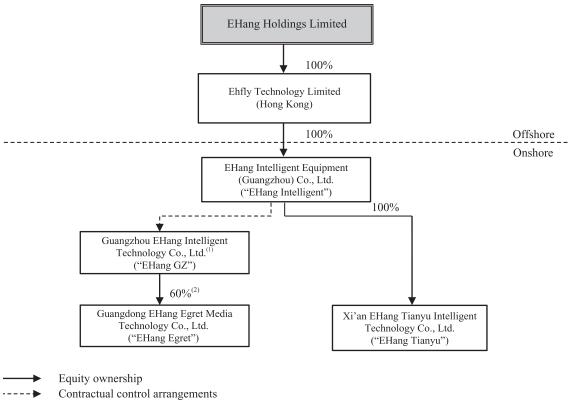Our business could be adversely affected by security-related concerns of the United States and other countries against Chinese companies and products.
Due to security-related concerns, U.S. government actions targeting exports of certain technologies to China are becoming more pervasive. The U.S. government has in the past issued export restrictions that effectively banned U.S. companies from selling products to ZTE Corporation, and in May 2019 imposed a similar ban on sales of all products to Huawei. In 2018, the U.S. adopted new laws designed to address concerns about the export of emerging and foundational technologies to China. In addition, in May 2019, President Trump issued an executive order that invoked national emergency economic powers to implement a framework to regulate the acquisition or transfer of information communications technology in transactions that imposed undue national security risks. These actions could lead to additional restrictions on the export of products that include or enable technologies on which we rely. Such restrictions imposed by the United States or any other countries may make it more difficult us to procure or license technological products from these countries, or affect the ability of our PRC suppliers to manufacture and provide us with advanced components, which may increase our costs, impair our products’ competitiveness, and have a material adverse effect on our business.
Similar security-related concerns may affect our ability to export our products to the United States and other countries. In May 2019, the U.S. Department of Homeland Security advised American companies about the inherent security risks associated with Chinese-made drones. In a related development, the U.S. government was also reportedly considering placing Chinese surveillance systems providers, including Hikvision Digital Technology and Dahua Technology, on a trade blacklist that would cut off their access to American hi-tech suppliers. We cannot assure you that our AAVs will not be placed on such trade blacklist in the future. If that event occurs, our ability to export our products to the United States will be adversely affected.
We may need to defend ourselves against claims of intellectual property infringement, which may be time-consuming and costly.
Companies, organizations or individuals, including our competitors, may hold or obtain patents, trademarks or other proprietary rights that
would prevent, limit or interfere with our ability to make, use, develop, sell or market our AAVs, AAV operating systems and infrastructure or their components, which could make it more difficult for us to operate our business. Companies holding
patents or other intellectual property rights may bring suits alleging infringement of such rights by us or otherwise assert their rights against us. Moreover, our applications and uses of trademarks relating to our design, software or artificial
intelligence technologies could be found to infringe upon existing trademark ownership and rights. We may also fail to apply for key trademarks in a timely manner. For example, we discovered some precedent registrations by several other Chinese
companies of the trademark “
 ” (the Chinese characters for our brand, “EHang”) for vehicles and bicycles, which fall into the same class of products as remote aerial vehicles and aerospace transportation. Although we received a
favorable judgement in a proceeding relating to such precedent registrations, we may continue to face intellectual property infringement claims in the future.
” (the Chinese characters for our brand, “EHang”) for vehicles and bicycles, which fall into the same class of products as remote aerial vehicles and aerospace transportation. Although we received a
favorable judgement in a proceeding relating to such precedent registrations, we may continue to face intellectual property infringement claims in the future.
If we are determined to have infringed upon a third party’s intellectual property rights, we may be required to do one or more of the following:
| • | cease selling, incorporating certain components into, or using AAVs or offering goods or services that incorporate or use the challenged intellectual property; |
| • | pay substantial damages; |
| • | seek a license from the holder of the infringed intellectual property right, which license may not be available on reasonable terms or at all; |
| • | redesign our AAVs, AAV operating systems and infrastructure, components or services; or |
| • | establish and maintain alternative branding for our products and services. |
In the event of a successful claim of infringement against us and our failure or inability to obtain a license to the infringed technology or other intellectual property right, our business, prospects, operating results and financial condition could be materially and adversely affected. In addition, any litigation or claims, even if frivolous, could result in substantial costs, negative publicity and diversion of resources and management attention.
16





